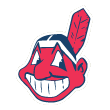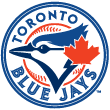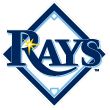We can sum up the difference between the National League and the American League these days with one little winter meetings anecdote.
We were speaking with a high-ranking official of an NL contender. We asked about a potentially earth-rattling trade we'd heard his team had kicked around.
It was there to be made. This official admitted that. His team could use the player. It had the players it would take to make the deal. But it wasn't happening. Not unless his team got realigned to the American League in the next 30 seconds, anyway.
"If we played in the other league, I'd probably do that," he said. "But in this league, I don't have to do it. If we keep the guys we'd give up, we have just as much chance to be playing in October as we would if we made the deal. So why do it?"
TRIVIALITY
Four pitchers have averaged at least 30 saves a season in this decade (the '00s). Can you name them? (Answer below)
Good question. When you play in a league with no Yankees, no Red Sox, no Tigers, no Angels, no superpowers, it's amazing how much patience that can inspire.
But over in "the other league," it's a different world. A challenging world. A downright scary world.
A world in which, just when you think you've got yourself a hell of a team, one of those superpowers goes out and trades for Miguel Cabrera and Dontrelle Willis. Or puts itself in position to trade for Johan Santana. Or hikes the payroll another $20 million.
So the question we keep wondering about is: What do you do if you're an AL team that's not one of those superpowers? When the heavyweights raise the bar, do you feel the need to try to pole-vault over it?
We posed that question to the GMs of three AL clubs. Here's how they answered:
 At least the Cleveland Indians are already a playoff team. You might even recall they were one win away from ousting the Red Sox from the postseason just a couple of months ago. But they also play in the same division as those upwardly mobile Tigers. So does this team feel pressured to counter every big move with one of its own?
At least the Cleveland Indians are already a playoff team. You might even recall they were one win away from ousting the Red Sox from the postseason just a couple of months ago. But they also play in the same division as those upwardly mobile Tigers. So does this team feel pressured to counter every big move with one of its own?
"Absolutely not," Indians GM Mark Shapiro said. "It would be a lie to say it doesn't affect you emotionally. But you've got to distance yourself from that as quickly as you can. If you try to build your club to beat one team, or measure yourself against one team, you make emotional decisions, and they usually end up being mistakes."
The Indians' payroll barely topped $60 million in 2007. The Tigers' payroll will be double that in 2008. The Yankees' payroll might quadruple that. So the Indians know exactly what they're up against. But they also understand they have to operate in their universe, not anyone else's.
"We need to focus on making our team as good as it can possibly be," Shapiro said. "We ask ourselves: 'How can we find ways to score more runs or prevent more?' The only question we ask is: 'What decisions can we make to improve our run differential?,' not 'Will it be enough to beat one team or counter the moves they made?'"
The only good news for the Indians is, they don't have to play in the AL East. So at least they don't have to play nearly 25 percent of their schedule just against the Red Sox and Yankees. Not that the Tigers are exactly the Joliet Jackhammers. But at least the Indians can finish behind the Tigers and still make the playoffs.
 Say, however, you're running the Toronto Blue Jays -- a team that one AL executive said, flatly, "would win the National League." You don't think you're not constantly wondering how you're supposed to outmaneuver the Red Sox and Yankees?
Say, however, you're running the Toronto Blue Jays -- a team that one AL executive said, flatly, "would win the National League." You don't think you're not constantly wondering how you're supposed to outmaneuver the Red Sox and Yankees?
"We can't outspend the Yankees," Toronto GM J.P. Ricciardi said. "We can't outspend the Red Sox. We can't outspend the Tigers, either. And we can't outspend the Angels. So what we keep asking is: What can we do to take a giant step?"
Well, they can always pray a lot. Pray for health. And pray that everything goes wrong in Boston or the Bronx. But we don't recommend that as a long-term team-building option. So the Blue Jays have a better game plan. You spell it P-I-T-C-H-I-N-G.
"That's our best bet," Ricciardi said. "The way we look at it, we're at least one of the top seven offensive clubs in the American League. And none of the seven of us are going to be able to pummel people to death. So the best chance we have is to outpitch the other teams in our division."
So they're hanging on to A.J. Burnett. They've put in their bids for Tim Lincecum and Erik Bedard. If they make a big move, it will be to add pitching, not subtract it, because at least they might have a shot to match the Red Sox and Yankees arm for arm. But if it comes down to matching dollar for dollar, "We can't do that," Ricciardi said. "And we never will."
 The Tampa Bay Rays spent their first 10 seasons as the AL East's designated punching bag. But it's time to stop laughing. Any minute now (seriously), this team is going to be no fun to play. So how do the Rays ignore the skyrocketing payrolls to their north and convince themselves they can actually outduel those Yankee/Red Sox behemoths some day?
The Tampa Bay Rays spent their first 10 seasons as the AL East's designated punching bag. But it's time to stop laughing. Any minute now (seriously), this team is going to be no fun to play. So how do the Rays ignore the skyrocketing payrolls to their north and convince themselves they can actually outduel those Yankee/Red Sox behemoths some day?
"We try to insulate ourselves from those things," GM Andrew Friedman said. "If we allow it to seep too far into our thought process, we're more apt to make large mistakes. Whatever moves we feel we should make to try to improve we should do it independent of that. If we start to feel that outside pressure because of what other teams are doing, it only gets us away from our own perspective. And we can't think that way."
Maybe nobody on the outside takes this team seriously. But within the sport, the Rays are already a source of rapidly loudening buzzing. Offensively, they just outhomered the Red Sox, outscored the Blue Jays and outstole all but two teams in the league. Meanwhile, on the other side of the ball, their stockpile of young pitching is up there with anyone's.
So this is a team with a chance to win 90 games by 2009. Whether it can ever spend $90 million to keep that group intact is another story. But for now, the Rays are locked inside that tunnel vision. They're all about development and more development.
"Look, we all have different market challenges," Friedman said. "We just have to identify what they are, operate within the constraints we have and go from there."
The funny thing is, as much as these teams deny they're being affected by what other clubs do, it's obvious everybody is affected in some way or other. How else do we explain the money the Royals are spending? Why else would the White Sox have hung on to Jermaine Dye, Mark Buehrle and Javier Vazquez?
The Angels have been telling people all winter they're constructing their team to match up with the Red Sox and Yankees in October. And we see the Mariners seriously contemplating trading their three best young players for Bedard.
The bar has been raised, whether they want to think about it or not. So all 14 teams in this league have to aim high, either for today, or tomorrow, or both. What other choice do they have?
"Well, I'd love to petition to move to the National League," laughed one AL executive this winter. "But that ain't happening."
Holiday Rumblings

Prior
The hottest free-agent starting pitcher on the market is a guy who has one win in the past 27 months and probably won't throw a pitch before Mother's Day. That's Mark Prior, a fellow being chased by nearly a dozen teams. And here they are, according to the best info we've been able to piece together:
Yankees, Red Sox, White Sox and Mariners in the AL. Mets, Cardinals, Padres, Astros, Giants, Reds and Nationals in the NL.
Some teams that have passed on Prior are saying they don't expect him to pitch before July. Others are concerned that he opted "only" for arthroscopic shoulder surgery over more extensive surgery. But his agent, John Boggs, told Rumblings that Prior is so confident he'll have a big year, he isn't even interested in a two-year deal.
"That's why a two-year deal is not acceptable -- because we're planning on him being good," said Boggs, who has continually declined to discuss the degree of interest from any specific teams. "We're not planning on taking a two-year deal and then having him break down. We're not even looking for one year and an option. We'll take our chances."
Prior is now eight months down the road from surgery and is expected to start throwing off a mound in January. Boggs has been advising teams not even to expect Prior to pitch in a game in spring training. While some clubs are already firing offers at him, Prior is in no hurry to "rush the process," his agent said.
Phillies Rumblings
![]()
![]()
The Phillies continue to talk with the agents for both Geoff Jenkins and Mike Cameron about two-year deals. While the club seems to favor Jenkins slightly over Cameron, it's amenable to signing whichever one says yes first -- assuming either of them does. The Phillies also have kicked around Kenny Lofton as a fallback option if they land neither.
Free-agent pitching options the Phillies have looked into: Akinori Otsuka, Byung-Hyun Kim, Roberto Hernandez, Kris Benson, John Parrish, Sidney Ponson and Chad Durbin.
They've stayed in the bidding on Kyle Lohse and Jeremy Affeldt, but they don't appear interested in the four- and five-year contracts those guys seem to think they've earned.
Bet you didn't know Prior has the highest career strikeout rate (10.37 per nine innings) of any active right-handed starter with 100 or more starts. No other unemployed right-hander (not counting Roger Clemens) is within three whiffs of that. The next-best rate belongs to Bartolo Colon, at 7.03.
As recently as 2003, a $120 million payroll was unheard of, for any team but the Yankees. This year, the buzz is that at least seven teams -- and possibly as many as nine -- could top $120 million. The Yankees, Red Sox, Angels, Dodgers, Mets, Cubs and Tigers are all projecting payrolls around that figure or higher. And the Mariners and White Sox could wind up in that zone with the right free-agent signing (or two).
So what are the luxury-tax ramifications of that? Zilch. The threshold for 2008 will inflate to $155 million (and probably affect only the Yankees and Red Sox). From there, the threshold zooms to $162M, $170M and $178M the following three years.
"A 100 million payroll used to be a huge payroll," one GM said. "But there's so much money in the game, within two years, that's going to be the average payroll."
Here's one fascinating idea in the Mitchell report that received almost no attention: Baseball should start testing prospective high draft picks for steroids. Interesting idea, "but what happens if they test positive?" wondered an executive of one club. "You can say, 'We won't draft him.' But you know what will happen if we don't draft him? Somebody else will."
The Mets still seem like a hanger-on in the Johan Santana talks. But one AL front-office man isn't sure why that is.
For one thing, he said, the Mets can put together a package that would be attractive to the Twins -- in part because outfield prospect Fernando Martinez "has a higher ceiling than Jacoby Ellsbury."
The second reason, the exec said, is that the Twins should make it a priority to move Santana out of their league. "Remember, the Twins are looking to compete, too," he said. "They're gearing up with good young players, and they're going to be good. But if they trade him to the Red Sox or Yankees, those teams are so deep, it wouldn't even really take a chunk out of them, or not that much of a chunk, anyway. Then they may run into the Yankees or Red Sox in the playoffs one year and wind up in a series where Santana puts them over the top.
"But if they trade him to the National League, they've only got a 1-in-16 chance of running into him in the World Series. So to me, if it's close, that would have to be factored in."
TRIVIA ANSWER
Mariano Rivera, Trevor Hoffman, Billy Wagner and (surprise) Jason Isringhausen.
Elsewhere on the Santana front, a tug-of-war could be looming between Yankees GM Brian Cashman and Principal Son Hank Steinbrenner over Santana.
It's clear that since talks broke down, many of the Yankees' baseball people have had second thoughts about including Phil Hughes in any package for Santana -- which effectively would obliterate any chance of that deal happening.
But according to one baseball man who has spoken to the Yankees' brass, Steinbrenner is "moving towards it." And if he moves any further toward doing that deal, he could find himself in a fascinating debate with Cashman and others over whether to pull this very large trigger. If that happens, why do we think it might not be the last debate Cashman has with Hank Steinbrenner?
And as the Yankees, Mets and Red Sox jockey for prime Santana position, the rest of the sport watches from afar, trying to handicap where this will lead. One AL executive still thinks it will eventually lead Santana to the Bronx.
"The Twins are doing the right thing, waiting for the right deal," he said. "But the Red Sox don't need to panic. They don't need him. There's no reason for them to get anxious. But the Yankees actually do need him. They're just trying to convince themselves they don't."

Fukudome
Kosuke Fukudome's signing by the Cubs was one of the most underrated acquisitions of the year, if only because the Cubs needed a left-handed-hitting outfielder with thump so badly.
They've had just four left-handed-hitting outfielders in the past quarter century who hit more than 22 homers in a season: Jeromy Burnitz, Corey Patterson, Jacque Jones and (lest we forget) Henry Rodriguez.
"This is one of the few teams that went into the offseason where one guy was going to make a real difference," one NL executive said.
Some scouts have wondered if Fukudome will be able to handle good left-handed pitching, but the numbers say he will. The past three years, his batting average against left-handers was .341 in 2005, .341 in 2006 and .282 this year.
One more Cubs note: Indications are that they've talked to the Orioles about both Brian Roberts and Erik Bedard but don't have what it takes to trade for both. It would be just one or the other. And if they do either, the Cubs still appear to be more focused on Roberts than Bedard.
True, the Tigers will run a lineup out there in which seven of the nine everyday players have made at least one All-Star team since 2005. But they also have a roster full of players with injury histories. So after dealing away seven of their best prospects this winter, they need to stay healthy, because they're short of reinforcements they can call up. "They've pretty much decimated their depth," one AL executive said. "So this is their window."
Speaking of clubs that have traded away a ton of players, new Astros GM Ed Wade has subtracted eight of them just in the past couple of weeks, in deals for Miguel Tejada and Jose Valverde. And dating back to last winter, when Tim Purpura was the GM, the Astros have dealt off all of these pitchers: Brad Lidge, Chad Qualls, Dan Wheeler, Jason Hirsh, Taylor Buchholz, Troy Patton, Matt Albers, Juan Gutierrez and Dennis Sarfate.
"They look like a team that has a shot at scoring eight runs a game -- and giving up 10," said an official of one team. "They are a better team today than they were at the end of the season. At least they have a lot more name guys. But you have to wonder if they're deep enough. If you don't have eight starting pitchers, 16 or 17 position players and eight or nine relievers lined up, the course of the season will weed that out. And I don't see it there, unless they have more underbelly than a lot of people think."
Jayson Stark is a senior writer for ESPN.com. His new book, "The Stark Truth: The Most Overrated and Underrated Players in Baseball History," has been published by Triumph Books and is now available in bookstores. Click here to order a copy.
